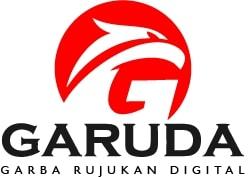Karakterisasi Mutu Fisik Teh Celup Kulit Buah Kopi Arabika (Coffea arabica L)
Karakterisasi Mutu Fisik Teh Celup Kulit Buah Kopi Arabika (Coffea arabica L)
DOI:
https://doi.org/10.59060/jurkes.v9i1.376Abstract
Kulit buah kopi arabika (Coffea arabica L.) merupakan bagian terluar dari buah kopi yang mengandung senyawa polifenol yang dapat menangkal radikal bebas dan memiliki aktivitas antioksidan yang tinggi, namun belum dimanfaatkan secara maksimal oleh masyarakat. Penelitian ini bertujuan untuk mengetahui apakah kulit buah kopi arabika dapat dibuat dalam sediaan teh celup herbal dan mengetahui karakterisasi mutu fisiknya berdasarkan keadaan air seduhan, pH, kadar air dan kadar ekstrak dalam air. Metode penelitian yang digunakan adalah eksperimental laboratorium dengan melakukan pembuatan teh celup herbal kulit buah kopi arabika yang selanjutnya dilakukan karaketrisasi mutu fisik dengan mengacu pada SNI (3836 : 2013). Hasil pengujian karakteristik mutu fisik teh celup herbal kulit buah kopi arabika menunjukkan bahwa keadaan air seduhan berwarna merah kecoklatan, berbau khas aromatik dan tidak berasa. pH sebesar 4 (persyaratan pH 3,7-6,1), kadar air sebesar 7,7 % (< 8%), dan kadar ekstrak dalam air sebesar 36 % (> 32 %). Sehingga dapat disimpulkan bahwa kulit buah kopi arabika dapat dibuat menjadi teh celup herbal dengan karakterisasi mutu fisik yang sesuai dengan syarat mutu fisik teh kering dalam kemasan.
References
Bangkol, S., Kecamatan, R., Utara, K. L., Nusa, P., & Barat, T. (2018). buah kopi menjadi produk unggulan yang bernilai ekonomis tinggi . Kegiatan telah limbah kulit buah kopi yang memiliki nilai ekonomis tinggi , yaitu teh cascara , pupuk. 1, 23–25.
Base, N. hidayah, Usman, M., As’ad, I., Asbar, & N.Noena, R. A. (2022). PKM31 - Nurul Hidayah Base - Potensi Limbah Buah Kopi Sebagai Produk Unggulan Desa Benteng Alla Utara Kabupaten Enrekang.
Bulan, C. D. (2021). Kopi Arabika Kalosi Enrekang Arabica coffee from Kalosi , Enrekang. 7(2).
Desy, I., Siagian, N., & Bintoro, V. P. (2020). Karakteristik Fisik , Kimia dan Organoleptik Teh Celup Daun Tin dengan Penambahan Daun Stevia ( Stevia Rbaudiana Bertoni ) sebagai Pemanis. 4(1), 23–29.
Dharma, M. A., Nocianitri, K. A., & Yusasrini, N. L. A. (2020). Pengaruh Metode Pengeringan Simplisia Terhadap Kapasitas Antioksidan Wedang Uwuh. Jurnal Ilmu Dan Teknologi Pangan (ITEPA), 9(1), 88. https://doi.org/10.24843/itepa.2020.v09.i01.p11
Handayani, R., & Muchlis, F. (2021). REVIEW: Manfaat Asam Klorogenat Dari Biji KOpi (Coffea) Sebagai Bahan Baku Kosmetik. FITOFARMAKA: Jurnal Ilmiah Farmasi, 11(1), 43–50. https://doi.org/10.33751/jf.v11i1.2357
Juwita, A. I., Mustafa, A., Tamrin, R., Agroindustri, P. S., Pertanian, P., & Pangkep, N. (1995). Studi Pemanfaatan Kulit Kopi Arabika (Coffea arabica L.) Sebagai Mikro Organisme Lokal (Mol). 1–8.
Maghfiroh, A. R. (2019). Pengaruh Kafein Dalam Kopi Pada Perhatian : Penelitian Eksperimen Di Pondok Pesantren As-Salafiyyah Yogyakarta. 56–61.
Prabowo, M. F., Bimantio, M. P., & Widyowanti, R. A. (2022). Formulasi Teh Rempah dengan Penambahan Pewarna Alami. 1(01), 20–39.
Ridawati, Alsuhendra, & Prowse, P. A. (2013). Analisis Kualitas Minuman Ringan Kemasan di Jakarta Timur. Prosiding Seminar National Food, Fashion, Beauty and Hospitality, 1–4.
Sholichah, E., Apriani, R., Desnilasari, D., & Karim, M. A. (2017). Polifenol Untuk Antioksidan Dan Antibakteri By-product of Arabica and Robusta Coffee Husk as Polyphenol Source For Antioxidant and Antibacterial. 57–66.
SNI. (2013). SNI 3836:2013 Teh Kering dalam Kemasan. Badan Standarisasi Nasional, 1–11.













